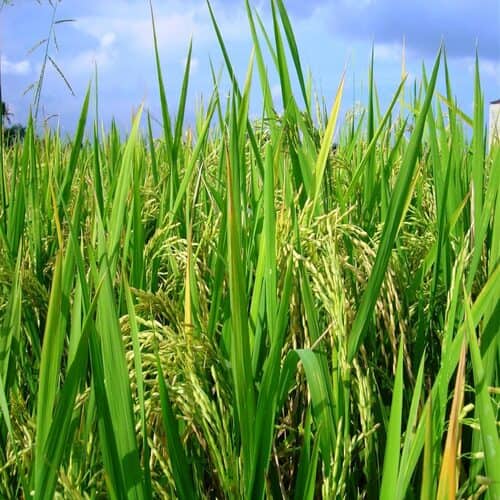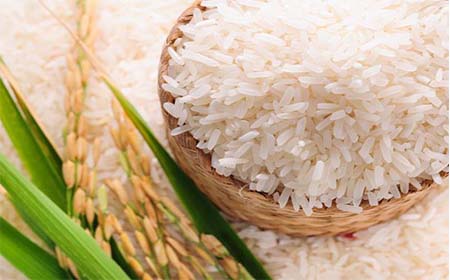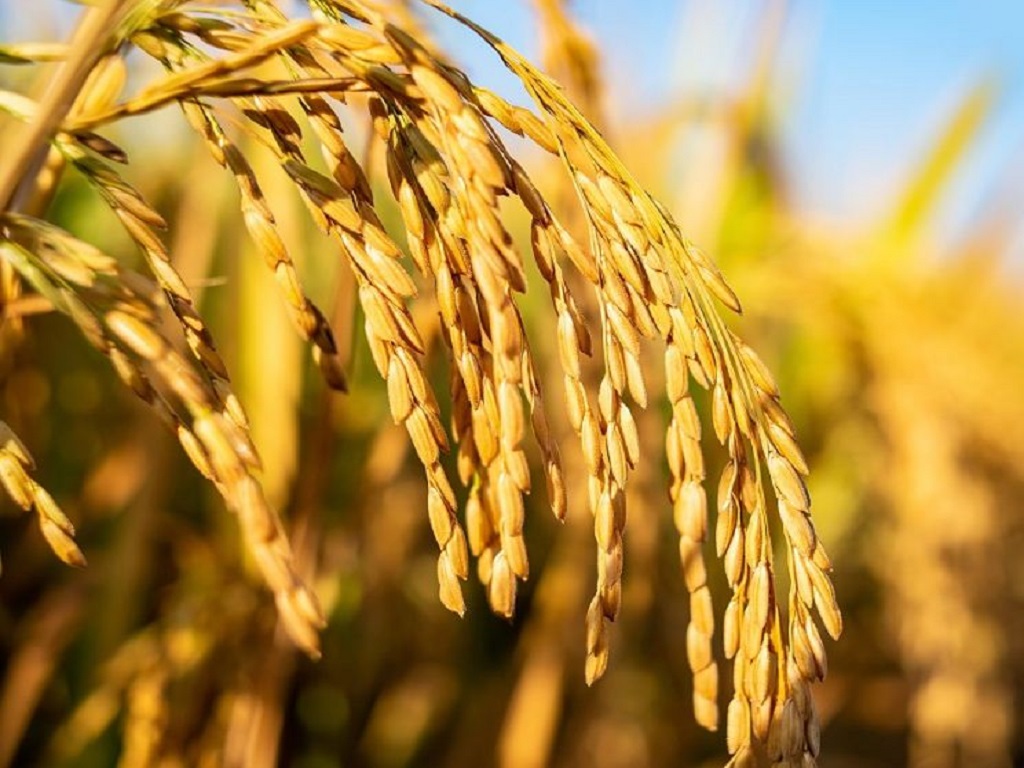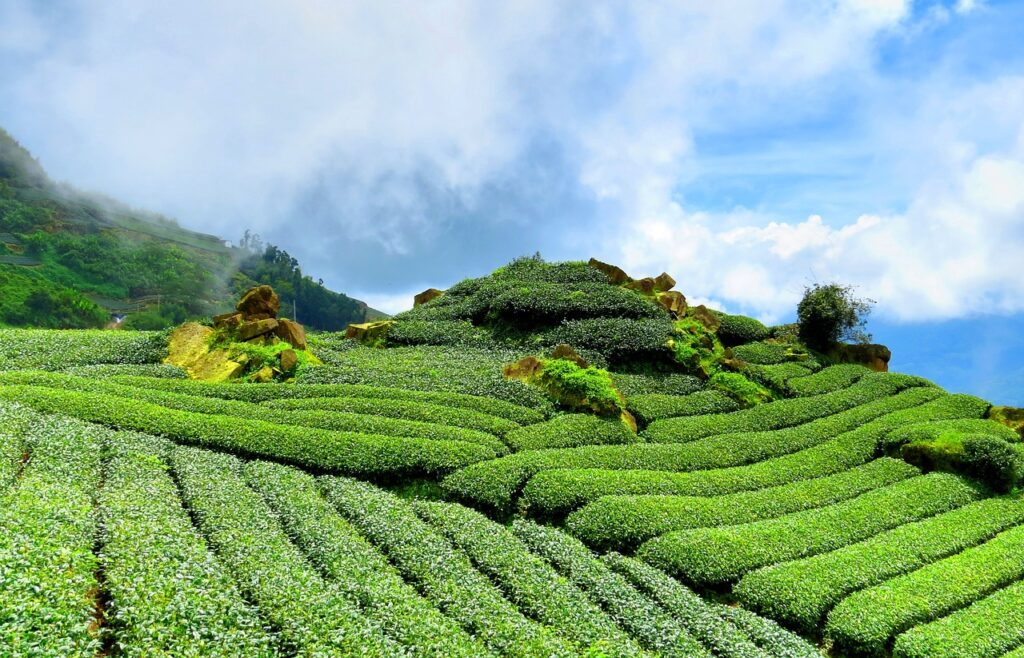Forms of Rice: by Milling Process
There are multiple forms of whole grain and white rice like raw rice, parboiled rice, and steamed rice. Raw, Parboiled, and Steam are the three different ways of processing the paddy (rice that still has its husk) to get rice. Certain varieties like Sona Masuri Rice are available in the market in all three forms, whereas Matta has only parboiled.
What are Raw, Parboiled/Sella, and Steam Rice?

RAW RICE
WHAT IS RAW RICE? IS THERE ANY DIFFERENCE BETWEEN RICE AND RAW RICE?
Raw Rice is the uncooked form of rice. In this version, the rice undergoes minimum processing. A grain of rice has three layers — the husk, the bran, and the endosperm. Raw Rice is prepared by drying Raw Paddy to around 11% Moisture level and then through milling, the husk is removed to get Brown raw rice which is further processed (also known as polished) to remove the outer bran to get White/Raw Rice. In White rice after polishing only 1% – 0.5% of the bran remains on the grain. Brown rice has a thicker layer of bran present on it. To get Silky Raw Rice all traces of bran are removed from the White Rice. Theoretically, raw rice has more nutritional value than boiled rice. But after washing with water, it loses up to 60% of water-soluble vitamins and minerals.
Also, cooking rice in large quantities of water and draining away the excess water at the end of cooking leads to a loss of B-group vitamins. Hence this washing and cooking method seriously affects the rice’s nutritive value.
TYPES OF RAW RICE IN THE WORLD
Domesticated Rice mostly belongs to two species. These are:
- African Rice (Oryza glaberrima)
- Asian Rice (Oryza sativa)
India and China cultivates the Oryza sativa (Asian Rice) for ages.
Raw Rice, further categorized under four major categories which are as follows:
- Indica Rice, which is from the tropical and sub-tropical regions of the world such as India, China, Philipines, Pakistan, Sri Lanka, Indonesia, etc.
- Japonica Rice grows in a region with a cooler climate such as Japan and Korea.
- Aromatic Rice like Jasmine from Thailand and Basmati from India and Pakistan.
- Glutinous rice grows mostly in Southeast Asia.
Above all these categories, India accounts for more than 75 percent of global trade in rice. Japonica rice accounts for 12 percent of global trade. Aromatic and Basmati Rice account for 10 percent of global trade.
Interesting Facts:
- In ancient India, unpolished brown rice was in use. The British only introduced Polished rice or white rice in India.
- Brown rice has high fiber and low glycemic index.
PARBOILED/BOILED/SELLA RICE:
Boiled Rice and Sella Rice are other names for Parboiled rice. The paddy is soaked in hot water inside the tank and heated to 90-95 degrees Celsius for almost 8 hours. After soaking, the next step is to steam the rice by passing steam through the grains from the bottom upwards for half an hour to one hour. This helps in hardening the grains. By this point, the tell-tale sign of a par-boiled grain is evident — it turns to a shade of yellow or golden and has a glassy exterior. Lastly, the hot air is passed through the paddy to obtain desired moisture level and the paddy becomes Parboiled and subsequently milled the way it is done in raw rice, i.e. de-husked to get Brown Parboiled Rice and subsequently processed further to get white rice by removing bran from the paddy.

Courtesy: Nextech Solutions
The main reason for making parboiled rice is that the major part of vitamins and minerals which are present in the outer aleurone layer of the rice grain is driven into the endosperm. Thus, parboiled rice does not lose its nutritional value and nutrients even after subsequent high-degree milling, washing, and cooking. Also, the heat hardens the rice grain and makes it resistant to insect invasion. The shelf life of the parboiled rice also increases hence it becomes more suitable for storage. Parboiled rice can have a shelf life of up to 30 years if stored properly.
FEATURES OF PARBOILED/BOILED/SELLA RICE
- Typically, light yellow colored
- Cooks slower since already parboiled
- Easy to digest
- Rich in nutrients
- Retains its structure
- Retains the aroma and flavor of paddy
The world consumes Parboiled rice more than any other rice. It is common practice in Kerala, West Bengal, and Orissa.
Steam Rice:
Steam rice is a mid-type of rice between raw and boiled rice. In Steaming, the hot steam is passed through the paddy for a certain defined time duration and then is dropped in a hot air drier to reduce its moister level.
The Husk is then removed from the paddy, through de-husking or de-hulling, and we get Brown rice. Thereafter the Bran layer and germ are removed from the kernel by applying friction to the grain surface to get White rice. The amount of bran removed is normally between 8-10% of the total paddy weight but this will vary according to the whiteness required.
FEATURES OF STEAM RICE
- Slight goldish color and attractive appearance
- Cooks faster requiring little water
- Less nutritious than brown or parboiled rice due to loss of husk and bran
- Non-aromatic varieties may lack specific taste or fragrance

Commercial Significance
Indian Rice in the Commercial World further differentiated under the following two categories:
- Basmati and
- Non-Basmati
But kernel sizes also play a vital role in every variety:
- Long Grain Rice
- Medium Grain Rice
- Short Grain Rice

Rice Product Basket of Cohere
To know more about our Basmati and Non-Basmati RICE Product Categories, CLICK the button below:
Just selling on any marketplace is a passive income source. But with the right products, you can make your income active to overtake your passive income. You just need to have the right products on your shelf. Think how your customers will feel when they can see lots of products on your shelf, in different styles and tastes compared to your competitors….. WOW Amazing!
If you are sourcing your products online then you will find most of the products on those sites are common, as they source it from the same Chinese market that uses machines more than labor. Further post-pandemic, the sentiments are also getting changed, and probably the governments are discouraging Chinese imports to their countries, the future doesn’t look bright. In that context, one of the best options now lies in the Indian market. This market is still unscathed and comparatively cheaper than the Chinese markets provided you know where to shop.
Just selling on any marketplace is a passive income source. But with the right products, you can make your income active to overtake your passive income. You just need to have the right products on your shelf. Think how your customers will feel when they can see lots of products on your shelf, in different styles and tastes compared to your competitors….. WOW Amazing!
If you are sourcing your products online then you will find most of the products on those sites are common, as they source it from the same Chinese market that uses machines more than labor. Further post-pandemic, the sentiments are also getting changed, and probably the governments are discouraging Chinese imports to their countries, the future doesn’t look bright. In that context, one of the best options now lies in the Indian market. This market is still unscathed and comparatively cheaper than the Chinese markets provided you know where to shop.
Just selling on any marketplace is a passive income source. But with the right products, you can make your income active to overtake your passive income. You just need to have the right products on your shelf. Think how your customers will feel when they can see lots of products on your shelf, in different styles and tastes compared to your competitors….. WOW Amazing!
If you are sourcing your products online then you will find most of the products on those sites are common, as they source it from the same Chinese market that uses machines more than labor. Further post-pandemic, the sentiments are also getting changed, and probably the governments are discouraging Chinese imports to their countries, the future doesn’t look bright. In that context, one of the best options now lies in the Indian market. This market is still unscathed and comparatively cheaper than the Chinese markets provided you know where to shop.





